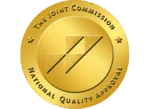Substance abuse and homelessness in California are two of the state’s most urgent public health crises, and the two issues are deeply connected. For many individuals, addiction can lead to housing instability, while the stress and trauma of homelessness often increase the risk of substance use. At Westwind Recovery®® in Los Angeles, we are committed to addressing both challenges through compassionate, evidence-based treatment that helps people rebuild their lives. To better understand how these crises intersect, it’s important to look at the ways addiction and homelessness influence one another and why this cycle is so difficult to break.
Understanding the Connection Between Substance Abuse and Homelessness in California
To better understand how these crises intersect, it’s important to look at the ways addiction and homelessness influence one another and why this cycle is so difficult to break. Examining the data for California, particularly Los Angeles County, reveals how this dynamic unfolds on the ground.
How Addiction Can Lead to Homelessness
Addiction can quickly destabilize a person’s life. When drugs or alcohol become a priority, it often impacts employment, relationships, and financial stability. Job loss, mounting medical expenses, or strained family connections may follow, making it difficult to keep up with rent or mortgage payments. Over time, these challenges can leave individuals without a safe place to live. In California—where housing costs are already among the highest in the nation—substance abuse can tip the scales toward homelessness much faster than in other regions.
Why Homelessness Increases Risk of Substance Abuse
Living on the streets or in unstable housing conditions creates daily stress, fear, and uncertainty. Many people experiencing homelessness turn to drugs or alcohol as a coping mechanism to numb physical discomfort, trauma, or emotional pain. Limited access to healthcare and safe environments also means untreated mental health issues often worsen, leading to higher rates of substance use. The lack of consistent support systems makes it extremely difficult to break free from addiction once it takes hold.
The Cycle of Poverty, Trauma, and Addiction
Poverty, trauma, and addiction often work together in a devastating cycle. Many individuals who experience homelessness have already faced childhood trauma, domestic violence, or long-term poverty. These experiences increase vulnerability to substance use disorders, which in turn make it harder to find or keep housing. Without intervention, the cycle continues—homelessness fuels addiction, addiction leads to further instability, and both feed into ongoing poverty. Breaking this cycle requires more than short-term relief; it calls for integrated solutions that address housing, mental health, and addiction treatment together.
Recent Statistics on Homelessness and Substance Abuse in Los Angeles and California

California continues to face the largest homelessness crisis in the United States, with Los Angeles County at the center of this growing challenge. Substance use disorders (SUDs) are a major factor within this crisis, both as a cause and as a consequence of homelessness.
The State of Homelessness in California
California is home to nearly 30% of the entire U.S. homeless population, with over 180,000 people experiencing homelessness in 2023, according to the U.S. Department of Housing and Urban Development (HUD). The majority of these individuals—about two-thirds—are unsheltered, meaning they live outdoors, in vehicles, or in places not meant for habitation. The high cost of housing, limited availability of affordable units, and economic inequality make California particularly vulnerable to rising homelessness rates.
Rates of Substance Abuse Among Homeless Populations
Substance abuse is both prevalent and deadly among unhoused Californians. Data from the UCSF Benioff Homelessness & Housing Initiative (BHHI) shows that 37% of Californians experiencing homelessness reported recent regular illicit drug use. In comparison, about 65% had used drugs regularly at some point in their lives. For those without stable housing, access to treatment is limited, and overdoses have become one of the leading causes of death among the unhoused.
Trends in Los Angeles County
Los Angeles has one of the largest unhoused populations in the nation, with more than 75,000 people experiencing homelessness in 2023, according to the Los Angeles Homeless Services Authority. Tragically, in 2023, drug and alcohol overdoses accounted for nearly 45% of deaths among people experiencing homelessness in LA County, according to the Los Angeles County Department of Public Health. Methamphetamine, opioids, and alcohol are among the most commonly misused substances, reflecting broader trends in the state’s addiction crisis.
Causes and Risk Factors for Substance Abuse in Homeless Populations
Substance abuse among unhoused individuals rarely develops in isolation. Instead, it often stems from a combination of mental health challenges, economic instability, trauma, and structural barriers like the lack of affordable housing. Understanding these risk factors is critical to creating solutions that address both addiction and homelessness in California.
Mental Health and Dual Diagnosis
Mental illness and substance use disorders frequently co-occur in homeless populations, a condition known as dual diagnosis. Disorders such as depression, PTSD, bipolar disorder, and schizophrenia can increase vulnerability to substance use as a form of self-medication. The UCSF California Statewide Study of People Experiencing Homelessness (CASPEH) found that more than two-thirds of participants reported symptoms of mental health conditions, and many simultaneously struggled with substance use.
Economic Hardship and Unemploymentbstance Abuse Among Homeless Populations
Financial instability is one of the most direct links between addiction and homelessness. Job loss due to substance use—or the inability to secure work because of an existing addiction—undermines housing security. In California, where housing costs are significantly higher than the national average, even short periods of unemployment can lead to eviction or foreclosure. For individuals without stable income or access to affordable treatment, substance abuse becomes both a cause and a consequence of ongoing hardship.
Trauma and Adverse Childhood Experiences
Many people experiencing homelessness report a history of trauma, including childhood abuse, neglect, or exposure to violence. Adverse childhood experiences (ACEs) are strongly linked to both substance use disorders and housing instability later in life. For some, trauma contributes to mental health struggles that make stable employment or relationships difficult to maintain. Others may turn to drugs or alcohol as a way to cope with unresolved pain.
Lack of Affordable Housing and Social Support
Even for individuals determined to recover from addiction, the lack of affordable housing and limited support systems can make lasting change nearly impossible. Without stable housing, people are far more likely to relapse, miss medical appointments, or face unsafe environments that perpetuate substance use. Additionally, many individuals experiencing homelessness lack strong social networks to provide encouragement, accountability, or practical support, leaving them isolated and more vulnerable to addiction.
Treatment Options for Homeless Individuals Struggling with Addiction

Addressing substance abuse in homeless populations requires a multi-layered approach that combines medical care, housing support, and community resources. Traditional treatment options like detox and rehab remain important, but sustainable recovery often depends on integrating these with housing-first and harm-reduction strategies.
Detox and Inpatient Rehab Programs
For many unhoused individuals, the first step toward recovery is medical detoxification, which provides a safe environment to manage withdrawal symptoms under professional supervision. Detox is often followed by inpatient rehab, where clients receive 24/7 support, structured therapy, and relapse-prevention strategies. Inpatient treatment is especially beneficial for people who lack stable housing, as it offers a safe, substance-free environment where they can focus entirely on recovery.
Outpatient and Community-Based Treatment
Not all individuals are able or willing to enter inpatient rehab. Outpatient programs provide a flexible option that allows clients to attend therapy and support groups while still living in shelters or transitional housing. Community-based treatment—such as mobile health clinics, drop-in centers, and street outreach programs—can be particularly effective for reaching unhoused individuals who might otherwise fall through the cracks.
Housing-First and Harm-Reduction Models
Housing-first programs prioritize providing stable housing without requiring individuals to be sober before entry. Harm-reduction strategies—such as needle-exchange programs, supervised consumption sites, and medication-assisted treatment (MAT)—reduce the immediate risks of substance use and provide an entry point for individuals who may not be ready for abstinence-based treatment. Together, these models recognize that stability and dignity are essential components of successful recovery.
Barriers to Accessing Care
Despite the availability of treatment options, many unhoused individuals face significant barriers to care. Lack of health insurance, transportation challenges, and long waitlists make it difficult to access services. Stigma also plays a role—some people may avoid treatment out of fear of being judged or criminalized. Language barriers, cultural differences, and a shortage of trauma-informed providers further complicate access. Without targeted policies and outreach, many people experiencing homelessness remain underserved, even as overdose deaths among this population continue to rise in California.
How to Help a Homeless Individual Struggling with Addiction
Helping someone who is homeless and struggling with addiction requires a balance of compassion, practical support, and awareness of available resources. While it can feel overwhelming to know where to start, small acts of understanding and connection can open the door to meaningful change.
Approaching with Compassion and Safety
The first step is to approach the individual with empathy rather than judgment. Many people experiencing homelessness have faced stigma, rejection, and trauma, so offering kindness can make a powerful difference. Speak calmly, listen without interrupting, and avoid language that shames or blames them for their situation. At the same time, it’s important to prioritize safety—both yours and theirs. If a person appears agitated, under the influence, or in crisis, maintaining personal boundaries and seeking professional support is the safest course of action.
Connecting to Professional Treatment Programs
Encouraging treatment can be life-changing, but the process should be handled with care and gentleness. Share information about local detox centers, inpatient and outpatient programs, or harm-reduction services without pressuring them. Helping with small steps—such as providing a phone number, transportation assistance, or accompanying someone to an intake appointment—can make professional treatment feel more accessible.
Supporting Advocacy and Community Efforts
Beyond individual support, community involvement plays a critical role in addressing the intersection of addiction and homelessness. Volunteering with shelters, donating to recovery programs, or participating in awareness campaigns helps strengthen the safety net for vulnerable populations. Advocating for policies that expand access to affordable housing, mental health services, and harm-reduction programs also fosters long-term change. By combining compassion at the personal level with advocacy at the community level, we can break down barriers and create a more supportive path to recovery for unhoused individuals in California.
Resources for Homelessness and Substance Abuse in California

Finding support for homelessness and addiction can feel overwhelming, but California offers a variety of statewide and local programs designed to provide immediate assistance and long-term recovery solutions. From crisis hotlines to community organizations, these resources can help individuals and families connect with the care they need.
Statewide Programs and Helplines
- SAMHSA National Helpline (1-800-662-HELP): A free, confidential, 24/7 helpline that provides referrals for mental health and substance use treatment programs nationwide.
- California Department of Health Care Services (DHCS): Offers substance use disorder treatment programs across the state, including Medicaid-funded services for low-income individuals.
- 2-1-1 California: A statewide resource line that connects people with local services such as shelters, detox programs, food banks, and mental health support. Simply dial 2-1-1 from any phone.
Los Angeles-Specific Homelessness and Addiction Resources
- Los Angeles Homeless Services Authority (LAHSA): Provides access to emergency shelters, transitional housing, and connections to addiction treatment programs.
- Los Angeles County Department of Public Health – Substance Abuse Prevention and Control (SAPC): Offers specialized treatment programs for people experiencing homelessness, including medication-assisted treatment (MAT) and harm-reduction services.
- The People Concern & PATH (People Assisting the Homeless): Nonprofits in Los Angeles that combine housing support with mental health and substance use treatment resources.
Westwind Recovery®’s Supportive Services
At Westwind Recovery®®, we recognize that addiction and homelessness often go hand in hand, and we are committed to providing compassionate, individualized care to those in need. Our Los Angeles programs include:
- Partial Hospitalization Program (PHP): Safe, structured environments to begin the recovery process.
- Outpatient Programs: Flexible treatment options for individuals transitioning out of shelters or temporary housing.
- Dual Diagnosis Care: Integrated mental health and substance use treatment to address underlying conditions.
- Relapse Prevention: Continued support to help clients maintain recovery and stability long after treatment.
By combining evidence-based addiction treatment with a supportive community, Westwind Recovery® offers a path toward healing and long-term recovery for individuals facing both homelessness and substance abuse.
Breaking the Cycle: Hope and Healing Are Possible
The connection between homelessness and substance abuse in California is complex, rooted in mental health challenges, poverty, trauma, and the lack of affordable housing. Together, these factors create a cycle that can feel impossible to escape. Yet with the right resources, compassionate care, and community support, recovery is within reach.
At Westwind Recovery®®, we believe every individual deserves the opportunity to heal and rebuild their life. Our evidence-based programs in Los Angeles are designed to meet people where they are, offering partial hospitalization and outpatient treatment, dual diagnosis care, and ongoing recovery support.
If you or someone you love is struggling with addiction and housing instability, don’t wait to seek help. Contact Westwind Recovery® today to discover how our team can offer the support and guidance you need to begin a new chapter.

Dr. Deena is the Chief Clinical Officer of Westwind Recovery®, an award-winning outpatient treatment center in Los Angeles where she oversees the clinical and administrative program and treatment methods. Dr. Deena is a doctor of psychology and licensed clinical social worker since 1993. LCSW #20628. Originally from the East Coast, Dr. Deena has worked running treatment centers, worked as a therapist in psychiatric hospitals as well as school settings and currently has a thriving private practice in the LA area. Dr. Deena has appeared regularly on the Dr. Phil Show as an expert since 2003. She has also been featured on many other TV shows, podcasts and has contributed to written publications as well as podcasts.




